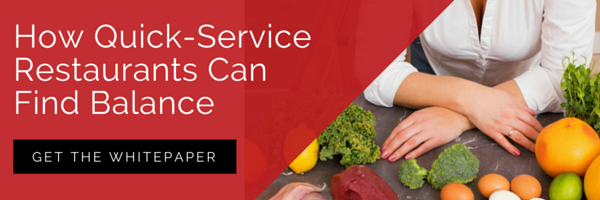
We hear a lot about farm-to-table eating. But what has been its impact on the fast food industry?
Adapting to the farm-to-table trend can be a tricky challenge for QSR chains. While value is still driving many fast food decisions for Americans, brands must make an effort to begin offering options that cater to diners’ more ethically driven and health-conscious decisions.
Today, let’s take a look at some of the challenges fast food chains face and at some of the practical ways that QSR supply chain managers and chefs are meeting them.
Many consumers are willing to pay for higher quality.
In 2008, Lexington, KY-based Italian fast food chain Fazoli’s couldn’t figure out why, after years of near-exponential expansion, it was suffering double-digit sales losses year after year, forcing outlet closures and dramatically shrinking its footprint. The culprit? Its own drive to provide low-cost fare to hungry customers.
After working with a consulting firm, Fazoli’s found that, although its price points were attractive due to its “record-low food costs,” consumers were seriously turned off by their perceptions that the chain was offering low-quality food, CEO Carl Howard told QSR Magazine.
Its alfredo sauce, for example, was composed of “mainly water and some dairy and some... voodoo stuff,” Howard said, in what was certainly not a flattering description.
And in an era when American consumers are increasingly demanding transparency about ingredients and insights into fast food companies’ supply chains, “voodoo stuff” surely didn’t make customers more likely to choose Fazoli’s over perceived healthier, higher-quality fare.
Now, Fazoli’s is spending 30 to 50 cents more per dish. But it’s been able to more than recoup that cost with higher prices — prices that most quality-seeking eaters seem not to be blinking much at.
“We are able to far exceed that in what we have been able to charge based on the changes that we’ve made in product, service and environment,” Howard reported to QSR. “We don’t have to be record low.”
Sure, farm-to-table sourcing tends to raise prices, but it gives companies branding opportunities.
To many fast food supply chain managers, the dilemma of risking the loss of price-motivated consumers by moving more toward more expensive local and farm-to-table sourcing, or risking the loss of quality-motivated consumers by sticking with traditional distributors and lower-priced ingredients, is a Scylla and Charybdis scenario. Darned if you do, darned if you don’t.
Or is it? Some companies don’t think so.
West Coast QSR restaurant Picnic LA, for example, tries to stick to its ethical premise, without making exaggerated claims (potential pitfalls with consumers) about its sourcing. It simply tries to do the best it can to source as local and as healthy as it can.
Yes, Picnic LA’s prices are comparatively high ($17, on average, for lunch and a drink). But its target consumers are true believers in the locally-sourced, small farm producer, ethical consumer movement. In refusing to budge, Picnic LA has developed its brand story.
“Our lives would be much easier if we just followed the market instead of trying to lead it. You have to have a very strong ‘true north’ not to give in,” Picnic LA co-founder told QSR. “Running a restaurant and trying not to use any commodity products is a real challenge.”
To that end, Ellis and his partners decided that honesty is the best policy.
Realizing that price point holds some consumers back — especially cash-strapped young adults — they have continued to develop their brand story and show those consumers who are price-shy what the difference is in quality.
Fast food eaters are making decisions based on perceived quality.
In its 2016 consumer survey, the International Food Information Council (IFIC) Foundation found that 31 percent of Americans have “changed their minds” about their willingness to eat a particular food, based on something they have learned about it in media reports, from online research, or from peers.
The same survey found that Americans far and away (70 percent!) consider locally sourced food to be the most trustworthy ingredients.
The farm-to-table movement is certainly something that fast food supply managers need to address. It’s not always an easy sell, but it is often a profitable sell. And long-term consumer trends seem to favor QSR companies that can find a way to make it work.






